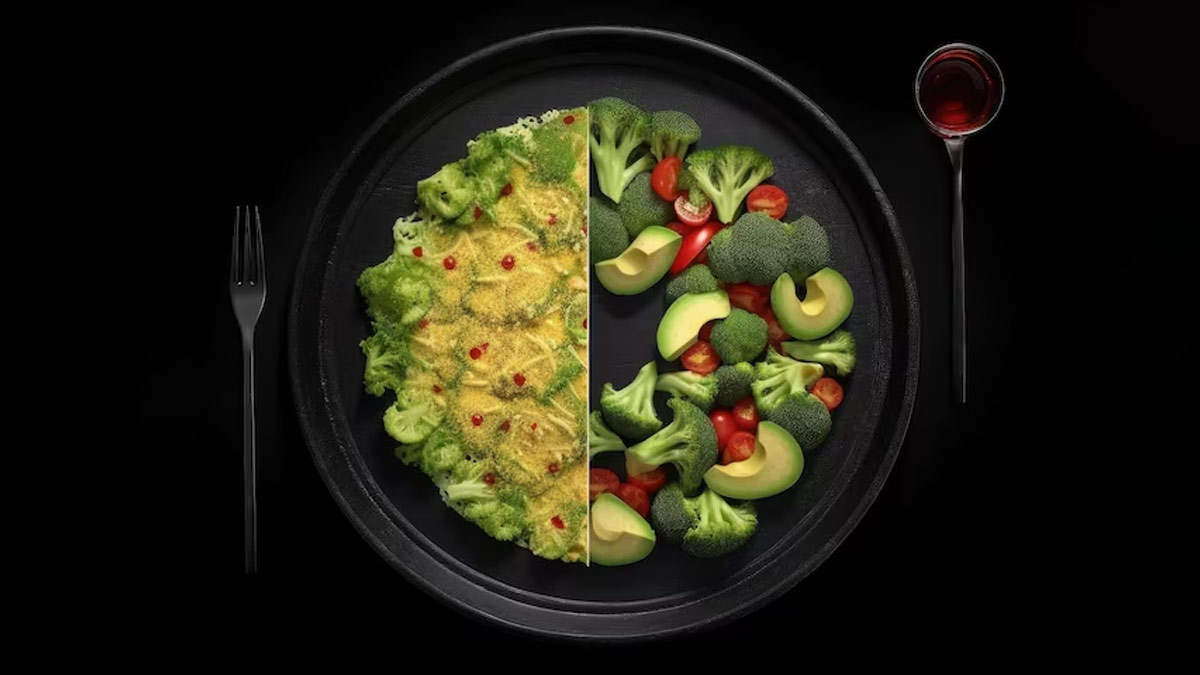
Have you ever noticed people talking about certain food combinations that are good for health, such as adding lemon to green tea? On the other hand, you may have also come across negative food combinations like milk and citrus fruits. This concept in nutrition is known as food synergy. To understand how this works, we spoke to Dr Ekta Singhwal MSc (Dietician), Ujala Cygnus Group of Hospitals, who shared details on the same.
Table of Content:-
What Is Food Synergy
Dr Singhwal said, “Food synergy focuses on how nutrients and bioactive compounds in whole foods interact and combine. When you eat these nutrients together in whole foods, it can be better for your health compared to eating them separately or alone.”
As per the Journal of Ethnic Foods, it's essential to consider how these interactions and combinations of food components work within the human system to harness potential health benefits,
How Does Food Synergy Work?

Enhanced Nutrient Absorption
Dr Singhwal said, “Certain nutrients can enhance the absorption of others when consumed together. For example, the vitamin C in fruits can enhance the absorption of iron from plant-based sources like spinach or beans. Combining these foods in a meal can optimise nutrient utilisation by the body.”
Also Read: Secret To Maintaining A Balanced Diet: Expert Shares Her Recommendations
Balanced Nutrient Ratios
Whole foods often provide a balanced ratio of macronutrients (carbohydrates, proteins, and fats) and micronutrients (vitamins and minerals). This balance can help regulate blood sugar levels, support satiety, and promote overall health.
Phytochemical Synergy
Dr Singhwal added, “Many whole foods are rich in phytochemicals, such as antioxidants, polyphenols, and flavonoids. These compounds often work together to provide a greater protective effect against chronic diseases and oxidative stress.” For example, the combination of lycopene in tomatoes and quercetin in onions has been shown to have a more significant impact on reducing inflammation and cancer risk than either nutrient alone.

Fibre and Gut Health
Whole foods, especially fruits, vegetables, and whole grains, are typically high in dietary fibre. Dr Singhwal added, “Fibre promotes a healthy gut microbiome, supports digestion, and can help prevent chronic diseases like heart disease and type 2 diabetes. The combination of various fibres from different food sources can have a synergistic effect on gut health.”
Reduced Risk of Overconsumption
When you consume whole, minimally processed foods with their natural combinations of nutrients, it's less likely that you'll over consume specific nutrients. This helps maintain a balanced diet and reduces the risk of nutrient imbalances or deficiencies.
Culinary Pleasure and Satisfaction
Combining different foods in a meal can also enhance the sensory experience of eating. This can lead to greater satisfaction and may encourage a more diverse and nutritious diet in the long run.
Examples Of Food Synergy

- Tomatoes and Olive Oil: Combining tomatoes, which are rich in lycopene, with olive oil enhances the absorption of this antioxidant.
- Leafy Greens with Citrus: Pairing leafy greens (like spinach) with citrus fruits (like oranges) provides vitamin C, which helps the body absorb iron from the greens more efficiently.
- Yoghurt and Berries: The probiotics in yoghurt, when consumed with fibre-rich berries, can support gut health and digestion.
- Beans and Whole Grains: Combining beans with whole grains, such as brown rice or quinoa, creates a complete protein source and provides a balanced nutritional profile.
- Broccoli and Mustard Greens: Combining these cruciferous vegetables enhances the cancer-fighting properties due to the synergy of their bioactive compounds.
- Turmeric and Black Pepper: Curcumin in turmeric becomes more bioavailable when combined with piperine, found in black pepper, increasing its anti-inflammatory effects.
- Salmon and Walnuts: Eating salmon with walnuts provides a double dose of omega-3 fatty acids, which are beneficial for heart and brain health.
Bottomline
Dr Singhwal concluded, “Food synergy is a holistic approach to nutrition that acknowledges the benefits of consuming whole foods and the complex interactions between nutrients and bioactive compounds within these foods. You should maintain a balanced and varied diet that incorporates a wide range of whole foods to maximise the synergistic effects on health and well-being.”
[Disclaimer: This article contains information provided by a registered healthcare professional and is for informational purposes only. Hence, we advise you to consult your expert for a dietary plan catered to your needs and body type.]
Also watch this video
How we keep this article up to date:
We work with experts and keep a close eye on the latest in health and wellness. Whenever there is a new research or helpful information, we update our articles with accurate and useful advice.
Current Version